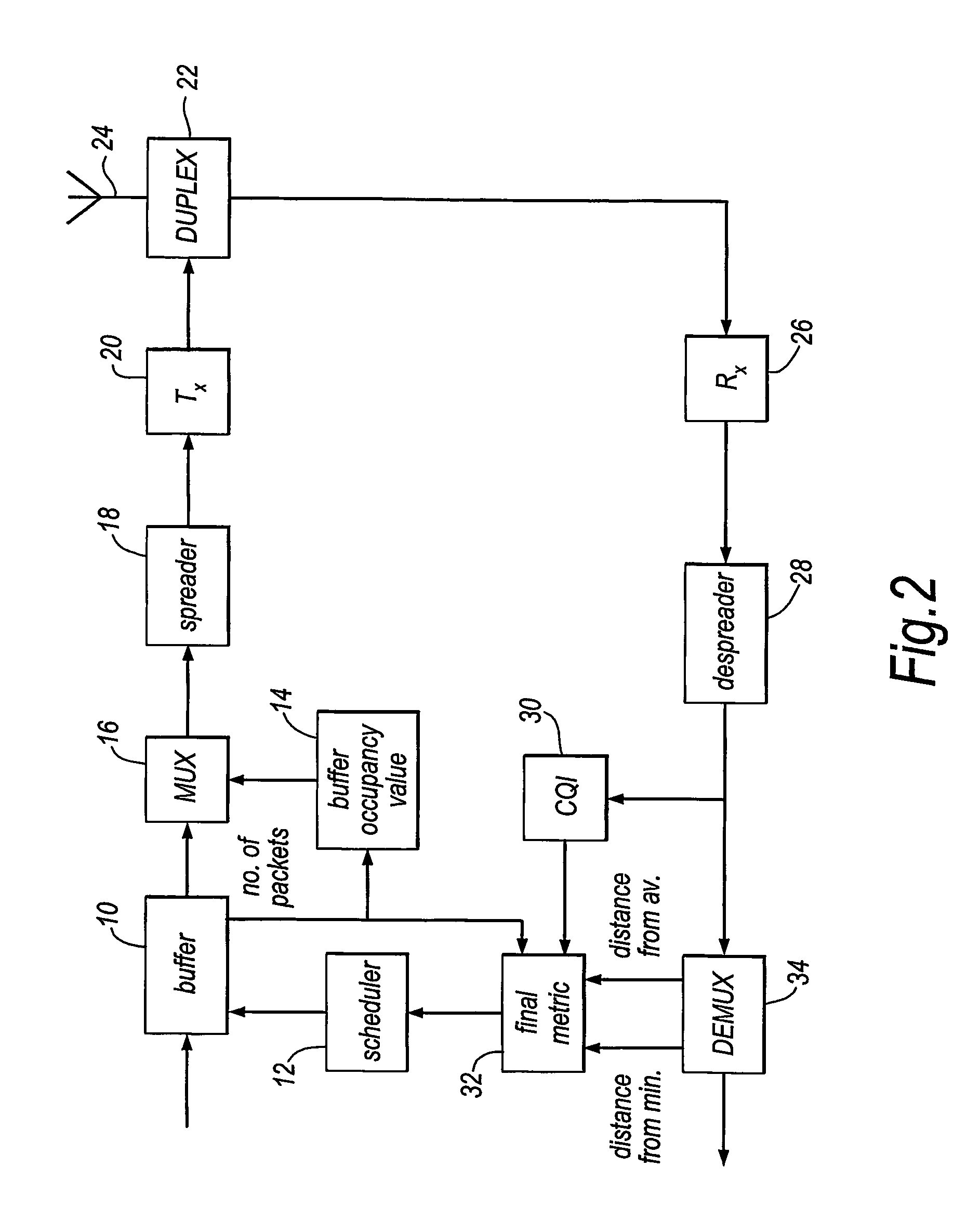Virtually centralized uplink scheduling
a wireless communication system and wireless communication technology, applied in the field of wireless communication system uplink transmission scheduling technology, can solve the problems of ues each interfering with each other, unable to make scheduling decisions for source ues, and affecting the quality of the transmission, so as to reduce the interference of neighbouring cells, and improve the accuracy of call admission and power control mechanisms
- Summary
- Abstract
- Description
- Claims
- Application Information
AI Technical Summary
Benefits of technology
Problems solved by technology
Method used
Image
Examples
first embodiment
[0075]In the first embodiment of the invention an algorithm is implemented which enables the uplink scheduler to become in effect virtually centralised and non-distributed. This enables the UEs to make better decisions on bit rate or waiting time or format of uplink transmission by having available information about the status of other source UEs in the same cell in the uplink. In this embodiment it is assumed that, as shown in FIG. 1, the base station serves a number of source UEs and destination UEs, and each UE is assigned a packet data buffer.
[0076]Each of the source UEs is grouped into a particular service group depending on the delay tolerance of the data that it is transmitting. The delay tolerance is a measure of the maximum acceptable time for a data packet to reach its destination. For example, video services may have a low delay tolerance of, say, 100 mS, while web services may have a relatively high delay tolerance.
[0077]During each uplink scheduling event, each source U...
second embodiment
[0107]In the first embodiment of the invention a buffer occupancy value is sent from each source user equipment to the base station every scheduling event, which may be every TTI, or every few TTIs. However, in some circumstances even reporting every few TTI may be undesirable because of the channel resources which are occupied. Thus, in a second embodiment of the invention, rather than transmit the buffer occupancy values to the base station at every scheduling event, the base station estimates the buffer occupancy values based on information transmitted to it at the beginning of a call, together with its own knowledge of how many packets it has received from a particular UE.
[0108]In this embodiment it is assumed that each UE is capable of determining the amount of packet data to be sent at the beginning of packet call. Each UE then sends this value to the base station. As communication proceeds further, the base station estimates the amount of data remaining in each UE buffer base...
examples
[0116]An example of the operation of an embodiment of the invention will now be described with reference to FIG. 5. In FIG. 5 a situation is shown in which four source UEs A, B, C and D try to reach their corresponding destination UEs A, B, C and D through the base station. It is assumed that all the UEs experience similar radio channel conditions and SINR (signal to noise and interference ratio). They support streaming real-time service with similar delay tolerances. In FIG. 5, C1 is the distance from average value and C2 is the distance from minimum value. It can be seen that UE A has received C1=49 which means the amount of data in its buffer is well above the average amount of ratios of all UEs. It also receives a C2=75 meaning that it is far away from the UE with minimum buffer data. Looking at its buffer this source UE realizes that its packet data buffer is almost full and it needs to transmit faster to empty its buffer to come down to reach average data levels. Among other U...
PUM
 Login to View More
Login to View More Abstract
Description
Claims
Application Information
 Login to View More
Login to View More - R&D
- Intellectual Property
- Life Sciences
- Materials
- Tech Scout
- Unparalleled Data Quality
- Higher Quality Content
- 60% Fewer Hallucinations
Browse by: Latest US Patents, China's latest patents, Technical Efficacy Thesaurus, Application Domain, Technology Topic, Popular Technical Reports.
© 2025 PatSnap. All rights reserved.Legal|Privacy policy|Modern Slavery Act Transparency Statement|Sitemap|About US| Contact US: help@patsnap.com



